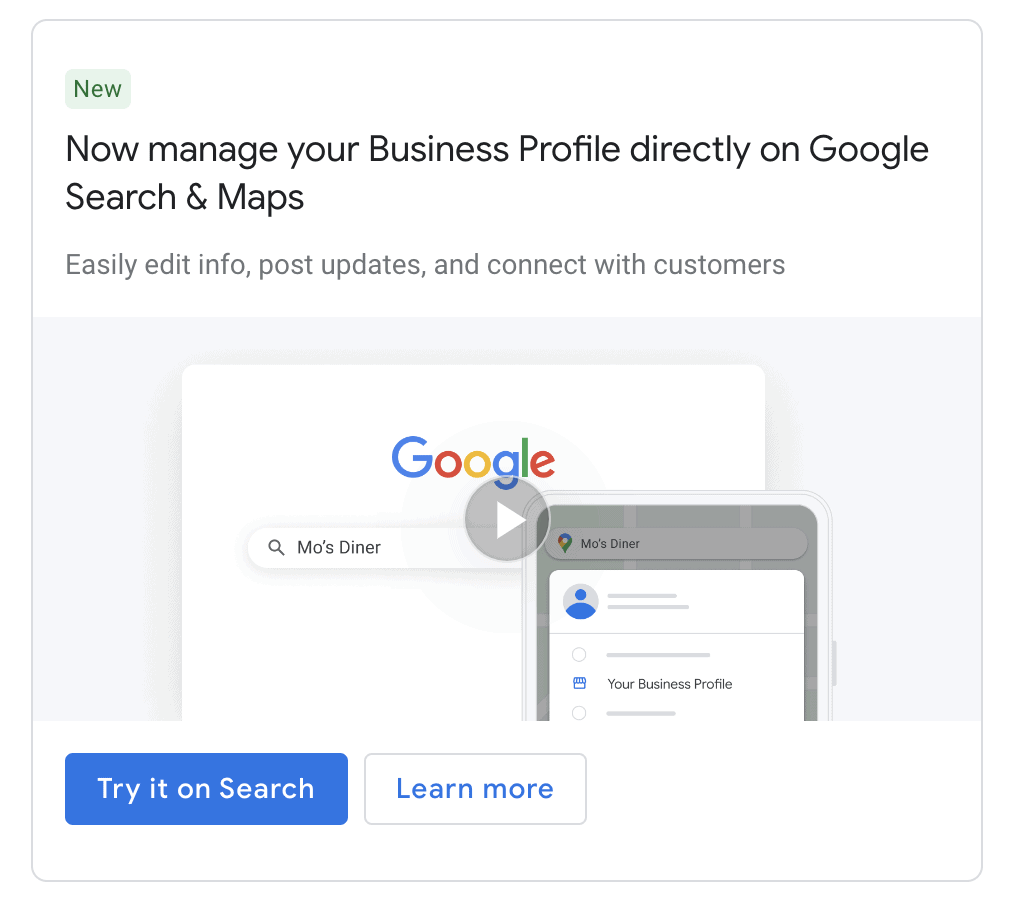Studies tell us over and over again, that online reviews help move the needle when it comes to bringing in new customers. According to reviewtrackers.com, "approximately 53% of consumers visit a business within 48 hours of performing a local search on Google." If you are brand new to online reviews and the profiles you can receive reviews on, consider starting with our blog on Local SEO or Being Found Online where we talk about the more foundational aspects of online directories. If you already have profiles set up, then keep reading!
Typically, these directories help customers who are either looking for your business directly or are looking to discover someone who does what you do. In either instance, having solid customer reviews will help you convert those searchers into paying customers. There are a few different factors that we should consider when it comes to reviews:
- Number of reviews
- The sentiment of reviews (or overall rating/score)
- Age of the reviews you have
We'll talk through each factor below.
Number of Reviews
The number of reviews your business has on your various platforms is important in a couple of different ways: the algorithm of the platform and customer perception.
Algorithm of the Platform
From a purely algorithmic perspective, having more positive reviews helps your profile show up more frequently and be more prominent (closer to the top of the list). The various goal posts that I've noticed from working with many businesses on Google My Business over the years are:
Some of these numbers have studies to back them up and some are just purely my observations over the years. The first goalpost of 17 is based purely on observations. I have noticed in my experience doing this that when a Google My Business profile goes over 17, they tend to start getting more free traffic and they tend to start getting more inquiries from their Google My Business account. I like to focus on this first goalpost because it's a very reachable goal. Almost every business has seventeen people they can ask to leave them a review on Google! It will take some effort but it's very reachable - even for a new business.
Now depending on your industry and your location, these numbers will change. For example, a restaurant in a major city can easily reach over 250 Google reviews and still not have the most in their area! But, I am providing general numbers for the local businesses I see in east Tennessee.
Customer Perception
Beyond getting your profile seen by more folks and being displayed more prominently, having more online reviews will compel the people who do see your profile to trust you more, engage with you faster and be more likely to do business with you. Why? Because online reviews act as social proof. Social proof is other people saying that you do a good job, that you're trustworthy and you won't give them a negative experience if they choose to do business with you.
In service-based industries, studies tell us that the magic number of reviews from the customer's point of view is 34. If you have 34 or more reviews, customers feel that you are more trustworthy and the likelihood of them clicking through to your website or calling you directly goes up significantly.
The Sentiment of Reviews
When we say sentiment as it relates to reviews, we mean the overall attitude or overarching theme of the reviews your business receives. So, for example, if you're a small business with a 5-star rating (out of 5), then your business reviews has extremely positive sentiment. On the flip side, if you're a business with let's say an overall rating of 1.7 stars, then the sentiment is going to be negative and will need some attention on your part! So, the sentiment is the overall sum of the reviews your business has. There are two types of reviews - positive and negative. Both are valuable.
Let's start with negative reviews and we'll work our way back to good reviews.
Negative Reviews
The first reason why negative reviews are valuable is just from a customer service point of view. An unhappy customer will typically 7 people and a happy customer will typically only tell one person. If an unhappy customer takes the time to express to you on Google what their experience was and why it was negative - this is a gift! Because you will actually get a chance to fix the problem and prevent it from happening again. Perhaps one of your team members isn't treating customers how they should when you're not around or perhaps a certain aspect of your process doesn't make for a positive experience - having this feedback allows you to fix it. Now, trust me, as a business owner who has had to take negative feedback from time to time - getting that negative review doesn't feel like a gift at first. At first, it's easy to puff out our chest and become enraged... write up a response that tells that person off. But, wait. Keep reading... and for the love of God, please don't reply like that.
Studies tell us that most consumers understand that not every single customer's experience is going to be stellar and they are used to that. One negative review will not be the reason why someone doesn't work with your company. With that in mind, studies do tell us that 87% of consumers care more about your response to the review. Meaning, they care about your responsiveness (did you actually respond), your professionalism, and your attitude (were you nasty and defensive or were you genuine and apologetic).
So, if you can't respond in this way at first - just pause. Or, perhaps have another team member write the response until you are less emotional. This is value for many folks in outsourcing this part of their business. We like to see the responses to a negative review do a few things:
- validate or acknowledge the customer's experience
- avoid defensive language and arguing with the customer at all costs
- bring the conversation off of the public channel
A great example of a response to a negative review would be something along the lines of: "(Person's name), we are so sorry to hear about your experience. We genuinely want to help make this right and would love to have the opportunity to talk to you about this directly. Would you please reach out to me directly so we can talk? (Insert phone number or email address by which they can reach you). Looking forward to hearing from you. -Victory, Co-Owner." There are lots of teachings on how to best handle negative reviews. But, ultimately, handling a bad review is just about humanizing the experience as much as possible. Sometimes it will require a bit of humility on your part to try to fix the situation... and sometimes, you just aren't going to be able to fix the situation!
In addition to that, studies tell us having a perfect 5-star rating can make customers a bit suspicious of your company. It makes them feel that perhaps you bought your reviews or that they aren't all real. So, having a few negative reviews that you respond to professionally and apologetically is actually a positive for your business!
Positive Reviews
When you are asking people to leave reviews, it is always a good thing to have them mention particular services or products that you want to rank for - as these will help make your profile more findable. It's important to remember that being responsive, even to positive reviews, is important! It's a chance to show your friendly and interactive side not only to the person who left the review but to the other searchers who will see your response later! The rating that most consumers look for is around 4.5 stars because it's not "too perfect" but it still shows an overall positive sentiment from the majority of people who have interacted with your company.
So, take the pressure off of yourself! You don't want a perfect or untarnished record. You just need a pretty good one. You can do this.
Age of Reviews
The third factor to consider is the age of your reviews. If all the reviews on your company's Google My Business profile are two years old, it will definitely spur some hesitancy in consumers. They may wonder if you are still in business or if you are still doing a good job for your customers. But, having reviews that have some age to them is also a benefit - shows a consistently positive track record with people who are viewing your profile. In the same vein, if all of your reviews are from the last two weeks - it may cause some hesitancy from consumers reading them.
We mention this to say that building up your online reviews will take some time and that's ok. Just like most other things in business, to do it right - it's going to take some time. Just embrace the process! Online reviews aren't something that are one and done. But rather something that you'll need to consistently put effort into both now and for the foreseeable future. Once you reach your goals, you can't kick your feet up and rest on your laurels. But rather, you'll need to continue requesting new reviews from customers so that your profile doesn't become irrelevant.
Asking for Reviews
The beautiful thing about online reviews is that getting reviews is free. All it takes is to provide a great experience to your customers and then ask for the reviews. Often just simply reminding your customers about the value of these reviews for your business will be enough to have them write one for you. In fact, 71% of consumers will leave a review if you ask! So, you start by just asking.
I wanted to make sure I gave you a couple of quick ideas on how to start asking folks for reviews. Remember, that you cannot offer discounts or anything in exchange for a review on Google. In fact, if you do this and they find out - your entire profile could be taken down. Don't do it! Offering discounts or free stuff in exchange for a positive review is considered black-hat marketing and we both know you don't want to go there. However, you can ask and you can remind folks. Some of my favorite strategies for getting more reviews:
- Services such as Nice Job, a platform that texts and emails your customers after a job. A system like this is automated, however, can be less personal than some of the other strategies listed below.
- Simply emailing customers after a job asking for the review. Something like, "Hey, we really enjoyed working with you. I was wondering if you'd take the time to share your experience with our company on Google." Then, adding a link to your Google My Business profile.
- Asking customers at check out and providing a business card reminder. We've had plenty of clients add business cards to bags at checkout and they've seen great success! You can have your information on one side and a review request on the back. For online businesses, adding a card into the box that you ship them is another way to implement this.
- Posting other customer's reviews on social media. A lot of times customers with positive experiences will be reminded to leave you a review when you share other positive reviews.
- Sending thank you cards asking for the review. Nothing like a handwritten thank you note in a digital world. It stands out and can be highly effective! However, this can be difficult to implement if gathering the customer's address isn't a natural part of your sales process (such as retail) or if you have a high-volume business (such as a restaurant, etc.)
Do you have other strategies that you've implemented for your business to get more customer reviews? We'd love to hear them. Email us and let us know at info@thesocialbrandtn.com!




















 2. Bing Places for Business
2. Bing Places for Business 3. Yelp
3. Yelp 4. Yellow Pages
4. Yellow Pages